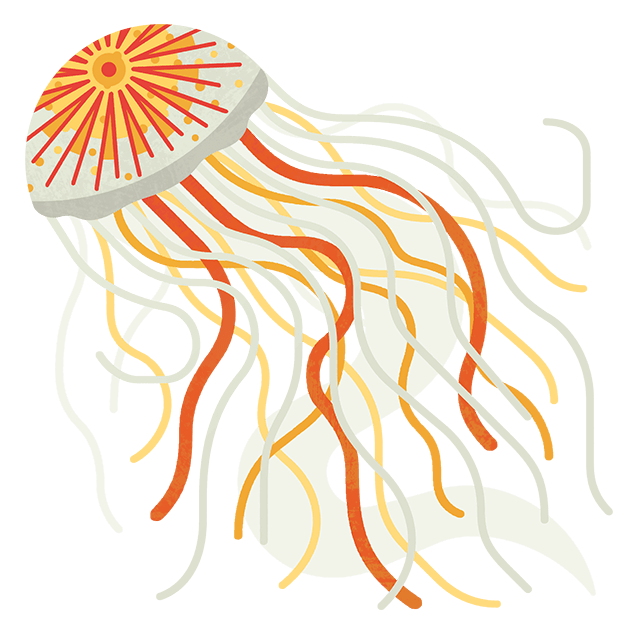
Unsigned = unprotected: UN High Seas Treaty
4 minute read
After four failed attempts, world leaders are meeting for a fifth time since 2018 to try to pass the UN High Seas Treaty. We need leaders to act now, for the future of our ocean and planet.
What is the UN High Seas Treaty?
The High Seas Treaty is a huge opportunity to protect our seas, and has been in creation for almost 20 years, since the 1982 UN Convention on the Law of the Sea was passed.
Almost two-thirds of the world's seas are considered international waters, which means all countries can fish, ship and do research there. But only 1.2% of these high seas, as they are known, are currently protected.
The High Seas Treaty aims to protect marine life on the high seas, outside of national boundaries.

Credit: Dreamphoto via Shutterstock
With the help of this new Treaty, we’ll be able to meet targets to properly protect 30% of the world’s land and ocean by 2030.
The Treaty will establish legally binding ways for the international community to work together and make parts of the high seas into protected areas.
It would also create rules that mean that the environmental impacts of human activities on the ocean are considered. This would mean that all planned activities, such as mining, would need to have an environmental impact assessment carried out and systems would be in place to study and share resources sustainably.
The High Seas Treaty would help in the prevention or limitation of damage to our precious marine life through a legally binding framework.

Credit: Norrie3699 via Shutterstock
What’s happening now?
Over the next fortnight, world leaders are meeting in New York to hopefully agree on the High Seas Treaty. This critical meeting is hoped to be the final session in a series that started in 2018.
The Treaty will need 60 signatories to enter into force.
Why it’s important for us
Our ocean is vital in global efforts to combat the climate crisis. It supports all life on earth and is vital in supporting biodiversity. For the health of people, planet and wildlife, we must protect and restore our ocean.
Marine Protected Areas are vital for biodiversity and climate. When protected from human activity, our ocean has an incredible ability to recover and thrive. With healthy habitats that provide food and shelter, populations of marine wildlife can bounce back.
By protecting whole areas of our ocean, we can also ensure that carbon remains locked into the seabed – vital for combatting the climate crisis.
However, without enforcement and management, protection of the high seas won’t work in practice. This week’s UN discussions need to result in decisive action to manage and properly protect the high seas.
You can learn more about the progress of the Treaty via the High Seas Alliance website.

Credit: Ben Clayton
What you can do closer to home
1. Sign our Marine UnProtected Areas Campaign
Currently, damaging activity like bottom trawling and dredging is allowed to take place in England’s offshore Marine Protected Areas (MPAs), causing destruction to important marine habitats and releasing carbon into the atmosphere.
For climate and nature, the proper protection of our MPAs is vital. Take action with us by calling on the UK Government to protect our MPAs, by signing our #MarineUnProtectedAreas campaign. (This campaign has now concluded)
2. Avoid red rated seafood
Our Good Fish Guide helps you avoid unsustainable seafood. By steering clear of red rated ‘Fish to Avoid’ you’ll help reduce pressure on species which are at risk from overfishing.
We rate all seafood available to buy in the UK using a simple traffic light system. Our ratings are based on how and where each species is caught.
3. Do a beach clean
Pollution has been reported as one of the five main drivers of the current biodiversity crisis, threatening 37% of marine mammals with extinction.
By beach cleaning with us, you collect vital data which we use to push for legislative action to stop pollution. Our data has been instrumental in the introduction of carrier bag charges and single-use plastic bans, resulting in a reduction of pollution on UK beaches.

Credit: Ruth Troughton
What happened at the Treaty?
Unfortunately, country delegates failed to come to an agreement.
This has been an ongoing international effort for almost two decades and the ocean cannot wait any longer.
While it's disappointing that a treaty couldn’t be reached, the increased attention on the issue, generated by communities worldwide, demonstrates a growing demand for greater ambition and delivery by our government representatives.
The progress made during this latest round of negotiations shows there is a viable path towards a global agreement. That in itself is encouraging; the UN General Assembly, which organises and coordinates these negotiations, have stated that a conclusion is due by the end of 2022.
We're only months away from that deadline so nations will need to regroup as soon as possible in order to come to an agreement and deliver on their promises for better ocean protection.
When the treaty talks are reconvened, we're calling on Governments and global leaders to adopt an ambitious treaty that:
- Agrees a common definition of marine protected areas
- Implements high and fully protected marine areas
- Stops fishing activities using bottom towed gear within MPAs
- Monitors bycatch instances
- Adopts a holistic approach to management plans


